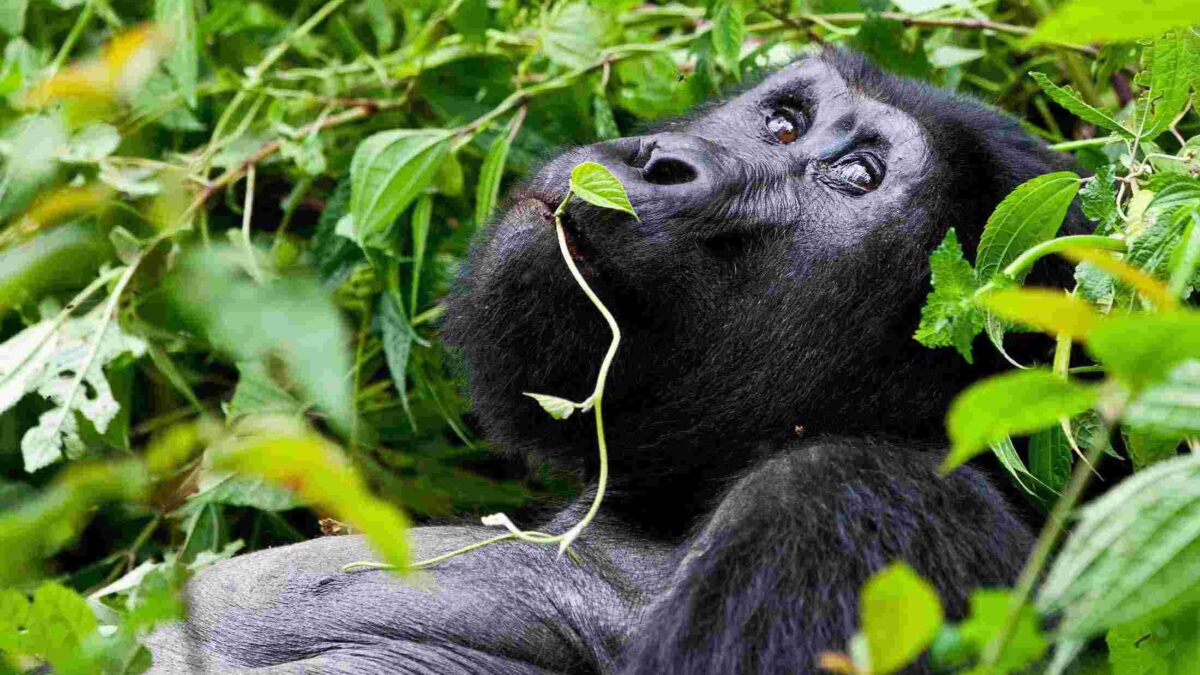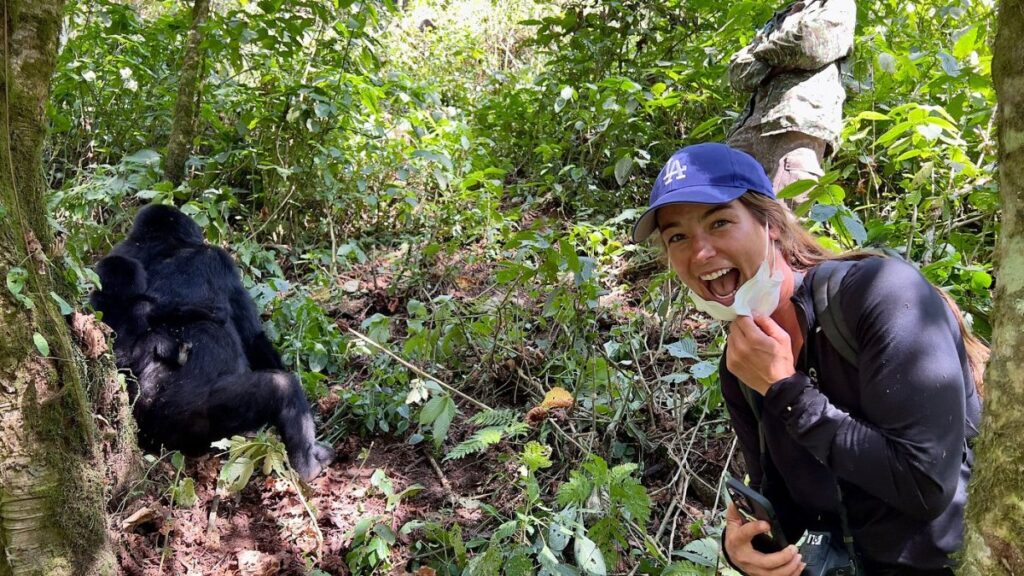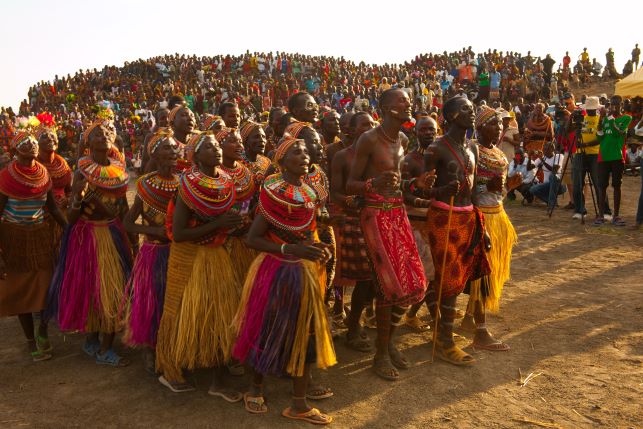- GET IN TOUCH WITH US:
- +256 753518160
- +256 777842166
- info@experiyatourcompany.com

Is Uganda safe for solo travelers?
November 6, 2025
What’s the best time of year to visit Uganda?
November 6, 2025How much should I budget for a 10-day safari in Uganda?

How much should I budget for a 10-day safari in Uganda?
Planning a safari to Uganda is one of the most exciting adventures a traveler can undertake. Known as the “Pearl of Africa,” Uganda is a land of incredible contrasts — from the misty mountains that shelter endangered gorillas to the open savannahs where elephants, lions, and hippos roam freely. A 10-day safari offers just the right amount of time to explore the country’s diverse landscapes, wildlife, and cultural highlights. But one of the most common questions travelers ask is: How much should I budget for a 10-day safari in Uganda?
The answer depends on several factors, including your travel style, accommodation preferences, activities, and whether you’re traveling privately or in a group. In this detailed guide, we’ll break down what to expect in terms of cost, the types of safaris available, and what’s typically included — helping you plan your dream trip with confidence.
Understanding Uganda’s Safari Experiences
Before getting into the figures, it is good to know the range of safari experiences available in Uganda. While most safaris in other African destinations happen on the savannahs, in Uganda, this takes the form of classic game drives coupled with unique primate encounters, lush forests, and vibrant lakeside escapes. An itinerary such as this can easily fit into 10 days for gorilla trekking in Bwindi, safaris in Queen Elizabeth and Murchison Falls National Park, chimpanzee tracking in Kibale Forest, and relaxation at Lake Bunyonyi or the Nile River.
Because the country offers such a wide range of experiences, costs can vary widely. A luxury traveler flying between parks and staying in exclusive lodges will spend more than a budget traveler driving between destinations and camping under the stars.
The Key Cost Factors
In budgeting for a 10-day safari in Uganda, a number of main factors will determine your total expense:
1. Gorilla and Chimpanzee Permits
For most travelers, gorilla trekking is the highlight of a Ugandan safari. A gorilla trek permit currently stands at $800 per person, as set by the Uganda Wildlife Authority. It allows visitors to spend one hour with a gorilla family in either Bwindi Impenetrable Forest or Mgahinga Gorilla National Park, under the guidance of professional rangers.
If you prefer a longer and more immersive experience, Uganda offers the Gorilla Habituation Experience, where you can spend four hours with a gorilla family at a cost of $1,500 per person.
Chimpanzee tracking permits, usually at Kibale Forest National Park, are $250 per person; the Chimpanzee Habituation Experience is $300 per person.
These permits are non-negotiable and form a huge chunk of any safari budget to Uganda. They also directly fund conservation efforts, helping protect these endangered species and supporting local communities.
2. Accommodation
Another major factor that determines your total cost is accommodation. Uganda can cater for all budgets, from basic guesthouses to world-class lodges overlooking either wildlife plains or misty jungles.
Here is a rough estimate per person, per night:
Budget: $80–$150 (basic lodges, guesthouses, or tented camps)
Mid-range: $150–$300 (comfortable lodges with en-suite rooms, good food and scenic locations)
Luxury: $350–$900+ (exclusive lodges with fine dining, private decks, and personalized service)
Over 10 days, this translates approximately to:
Budget Safari: $800-$1,500 total accommodation cost
Mid-range safari: $1,500–$3,000 total
Luxury safari: $3,500–$9,000 total
Luxury lodges include the likes of Buhoma Lodge, Paraa Safari Lodge, or Kyambura Gorge Lodge and offer amazing comfort, often with views, private guides, and gourmet dining experiences.
3. Transportation
Because Uganda’s national parks are scattered around the country, transportation can make a big difference in both time and cost.
Road Safaris (Most Common): Traveling by 4×4 safari vehicle is the most popular option. You will pay close to $150–$250 per day for a private vehicle with a professional driver-guide, including fuel and park transfers. For a 10-day trip, that is around $1,500–$2,500.
Fly-in Safaris (Luxury Option): Domestic flights between parks are faster but pricier. One-way flights typically range from $250–$400 per person. For a 10-day itinerary visiting 2–3 destinations, you might spend $800–$1,200 per person on flights.
Group Tours (Budget Option): One can join a group safari, thus reducing the costs by sharing transportation and guide fees.
4. Park Entry Fees
All visitors to Uganda’s national parks pay daily conservation fees, usually in the range of $40–$70 per person per day, depending on the park.
For a 10-day safari, covering 3–4 parks, expect to pay between $300–$500 in park fees.
5. Food and Beverages
Most safari lodges in Uganda are on a full-board basis, so breakfast, lunch, and dinner are catered for. If the meals aren’t included, at mid-range lodges, meals will cost about $25-$50 per meal. Drinks such as bottled water and coffee are often complimentary, while alcoholic beverages are billed separately.
6. Guide Fees and Tips
Guides are an essential part of any safari experience — their knowledge of wildlife, culture, and nature transforms your journey. Guides are usually included in private safari packages, but it’s customary to tip around $10–$20 per day. For porters assisting with gorilla trekking, tipping $10–$15 is standard.
7. Other Costs to Consider
Visa Fees: $50 for a single-entry tourist visa, to be paid online before arrival.
Travel Insurance: Highly recommended, usually $75–$150 for 10 days.
Souvenirs and Personal Expenses: Depending on your interests, budget $100–$300.
Laundry or Extra Activities: Most lodges can do laundry for an added cost, and other optional activities such as village visits or boat rides may be available for $30–$100 each.

Sample 10-Day Safari Itinerary with Cost Breakdown
To put this into perspective, let’s consider a sample itinerary that achieves that balance between adventure, comfort, and wildlife diversity.
Day 1–2: Arrive in Entebbe, transfer to Murchison Falls National Park for game drives and a Nile River boat cruise.
Day 3–4: Drive to Kibale Forest for chimpanzee trekking and a nature walk in Bigodi Wetland Sanctuary.
Day 5–6: Continue to Queen Elizabeth National Park for a game drive, Kazinga Channel cruise, and relaxation.
Day 7–8: Go to Bwindi Impenetrable Forest to trek gorillas.
Day 9–10: End your safari at Lake Bunyonyi before returning to Entebbe.
Here’s an approximate cost breakdown per person:
Budget Option: $2,800–$3,500
Shared 4×4 vehicle and guide
Budget lodges and meals
Gorilla and chimp permits included
Park fees and fuel included
Mid-Priced Option: $4,000–$5,500
Comfortable 4×4 vehicle with private guide
Mid-range lodges with full-board meals
Gorilla and chimp permits
Park fees and selected activities
Luxury Option: $7,000–$10,000+
Fly-in transfers between parks
Exclusive lodges or tented camps
Private guide and tailored itinerary
Premium meals, drinks, and additional activities
The above estimates include accommodation, permits, transportation, meals, and park entry fees, but exclude international flights to Uganda, which usually range from $800–$1,200 round trip depending on your departure location.
Means of Reducing Costs
If your budget is limited and you still want to experience Uganda’s incredible wildlife, here are a few smart tips that will lower the cost:
Travel in the Low Season: Rates are lowest during March–May and October–November. Lodges may grant a discount of 10–20%.
Join Group Safaris: Shared safaris are far cheaper, especially for solo travelers.
Limit Fly-In Transfers: Transfers by road take longer but significantly reduce costs.
Limit your destinations: Instead of running around, focus on two or three prime parks and spend more time in each.
Book in Advance: Gorilla permits and lodges get fully booked quickly. Early booking secures better deals.
Value Beyond the Cost While safaris in Uganda may seem costly compared to typical vacations, they offer a level of depth and meaning few other trips can match. Each dollar spent supports conservation, protects endangered gorillas, and sustains local communities that depend on eco-tourism. When you walk through a rainforest and lock eyes with a silverback gorilla, you understand the true value of the experience — it’s more than a holiday; it’s a connection with one of the last wild sanctuaries on Earth.
A 10-day safari in Uganda can cost anywhere from $3,000 on the budget end to $10,000 or more for a luxury experience. The difference comes down to accommodation, transportation, and the level of exclusivity you prefer. Regardless of your budget, Uganda delivers extraordinary value: a blend of adventure, wildlife, and warmth that leaves travelers changed forever. To make sure your safari is perfectly planned, safe, and unforgettable, it’s best to book through a reputable local expert who knows the terrain and logistics. Experiya Tour Company specializes in organizing tailored safaris that fit every budget — from affordable group adventures to high-end luxury itineraries. Their professional guides, reliable vehicles, and deep local knowledge ensure every traveler experiences the magic of Uganda with ease and comfort.



